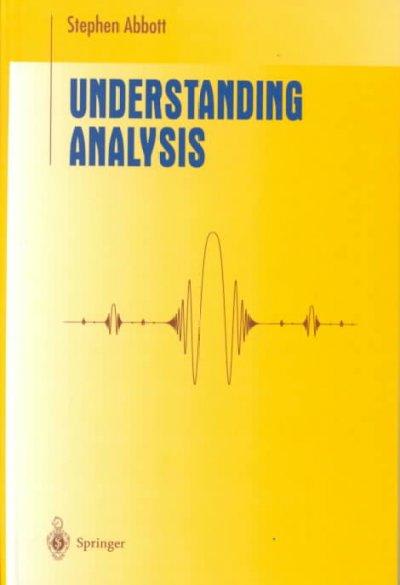Question
The unprecedented shift to remote learning during the Covid-19 pandemic offered a chance to learn about student experiences and needs and possible future trends in
The unprecedented shift to remote learning during the Covid-19 pandemic offered a chance to learn about student experiences and needs and possible future trends in unit design. An educator set out to understand the impact of remote learning and assumed that 46% of students would report their studies in the new situation (online) is the same as in the face-to-face context.
In a random sample of 45 university students, 17 rated their overall learning in the virtual format as on par with the face-to-face learning.
Research Question: Has the proportion of students reporting an equal preference for online and face-to-face learning changed due to the Covid-19 pandemic?
Use the above information to answer the following questions by choosing the most correct option or typing the answer.
(1 mark) What is the population proportion of university students reporting the same learning experience in online and face-to-face contexts? p= Answer (2dp) (Hint: Enter your answer as a proportion, such as 0.01)
(1 mark) What is the sample proportion of university students reporting the same learning experience in online and face-to-face contexts? p^=p^= Answer (2dp) (Hint: Enter your answer as a proportion, such as 0.01)
(1 mark) Which statistical test can be used for the research question? Answer
A. a z-Test for a population proportion
B. a one-sample t-test for a population mean
C. a two independent samples t-test for comparing means
(1 mark) Have the success and failure conditions met to use normal approximation to binomial distribution? Answer
A. yes
B.no
(1 mark) Calculate the standard error for the sample proportions, assuming the population proportion is known and p = p0p0 Answer (3dp)
(1 mark) What is the absolute value of the test statistic [Hint: don't round pp or p^p^ in your calculation]? Answer (3dp)
(1 mark) What is the degrees of freedom associated with this hypothesis test? AnswerA. n-1.B. n-2C. nD. None of the other options
A. n-1
B. n-2
C. n
D. None of the other options
(1 mark) Based on the test statistic above, do you expect to see the hypothesised value of population proportion (pp) lying inside the 95% confidence interval? Answer
A. Yes
B. No
C. None of the other options
3 marks) Calculate the 95% confidence interval to estimate the proportion of university students reporting the same learning experience in online and face-to-face contexts.
Calculate the standard error for the sample proportions, assuming the population proportion is unknown. Answer (3dp)
Lower Bound = Answer (3dp)
Upper Bound = Answer (3dp)
Instead of focusing on the proportion of university students reporting the same learning experience in online and face-to-face contexts, we shift our attention to the variable X: the number of university students who reported the same learning experience in online and face-to-face contexts.
Use the above information to use the following questions.
(1 mark) Assuming the hypothesised value holds, what are the expected numbers of university students who reported the same learning experience in online and face-to-face contexts? Answer (1dp)
(1 mark) Which statistical test did you use to calculate the above expected number? Answer
A. a chi square goodness of fit test
B. a one-sample t-test for a population mean
C. a chi square test of independence
(1 mark) What are the degrees of freedom associated with this hypothesis test? Answer (Integer)
(2 marks) What is the value of the test statistic associated with this hypothesis test? Answer (3dp)
(2 marks) What is the relationship between this test statistic, Question 13, and the test statistic in Question 6? Answer
A. There is no relationship between Question 6's test statistic and Question 13's test statistic
B. There is a negative linear relationship between Question 6's test statistic and Question 13's test statistic
C. There is a positive linear relationship between Question 6's test statistic and Question 13's test statistic
D. The square of the test statistic in Question 6 is identical to the test statistic in Question 13
Step by Step Solution
There are 3 Steps involved in it
Step: 1

Get Instant Access to Expert-Tailored Solutions
See step-by-step solutions with expert insights and AI powered tools for academic success
Step: 2

Step: 3

Ace Your Homework with AI
Get the answers you need in no time with our AI-driven, step-by-step assistance
Get Started


